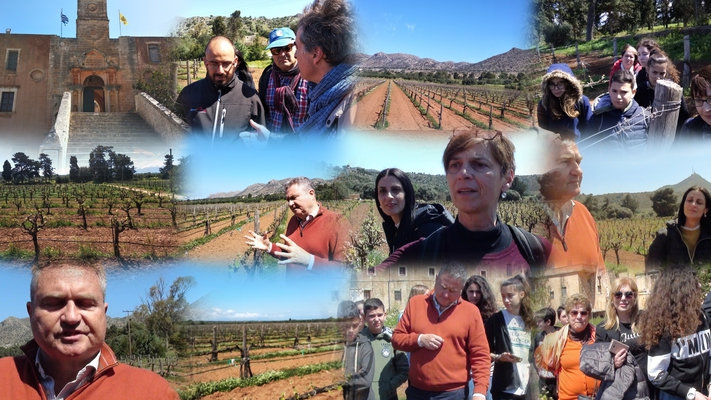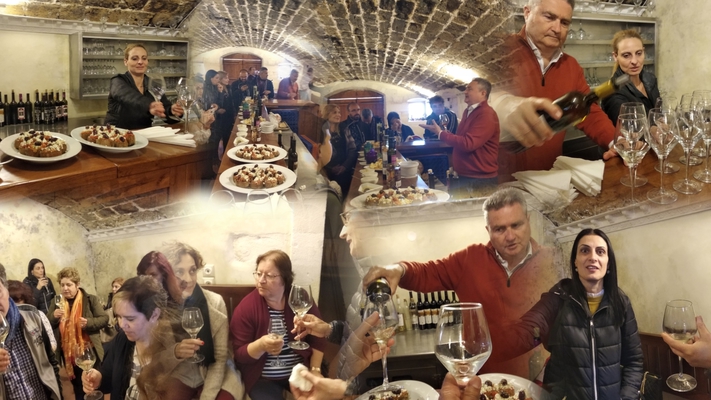Activity - Erasmus Students Interview the Erasmus Teachers
On the 3rd day of the Erasmus teachers’ visit to Crete, Wednesday 10 April 2019, the students of 5th Gymnasium of Chania interviewed the guest teachers and asked them about their hometown, school, students, project activities they had implemented, etc.
Poster - Erasmus Students Interview the Erasmus Teachers
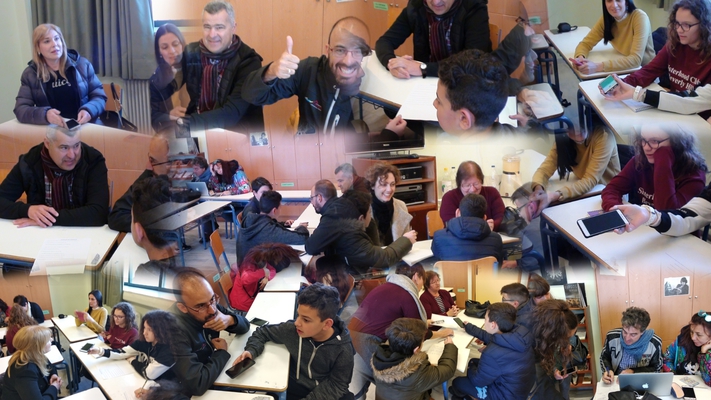
The school celebration
A farewell celebration was held during which the students danced traditional Cretan and Greek dances, performed Cretan literature of 17th century and sang contemporary Greek songs.
At the end of the celebration, the teachers were given a certificate of attendance.
Poster - Traditional Cretan and Greek Dances
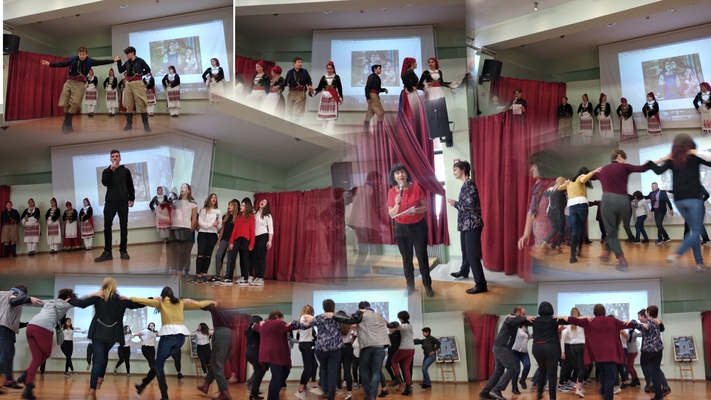
Activity - Planting a Grape Vine
Teachers and students planted a grape vine in the garden of the school as a symbolic gesture of friendship and collaboration.
Poster - Planting a Grape Vine
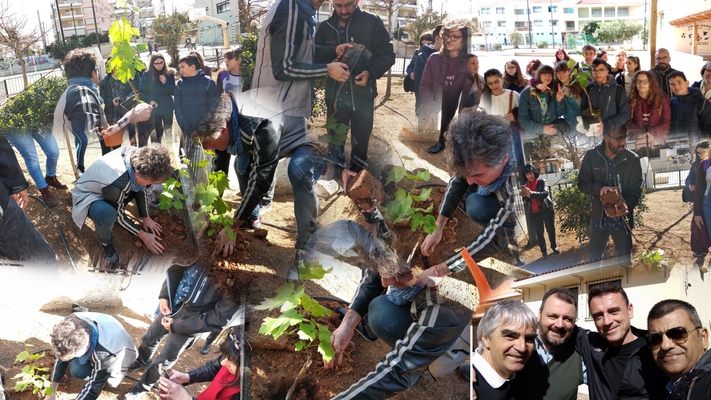
Activity - Exploring, Filming, Documenting the vineyards of Agia Triada Monastery
The teachers and the students visited the Monastery of Agia Triada Tzagarolon, in the Akrotiri peninsula and were given a tour to the vineyards of the monastery by Mr Manessis who talked about grape cultivation and wine making on the island of Crete. Then, the teachers visited the cellar of the monastery where they tasted the local wine variety called Romeiko.
Romeiko (Greek: Ρωμαίικο or Ρωμέικο) is a red grape variety indigenous to Greece. Its name derives from the term Romios that is used to refer to modern Greeks (literally Roman as a citizen of the former Byzantine Empire).
Romeiko is an indigenous grape found on many Cycladic islands and Crete, prominently in the region of Chania and in particular Kissamos where it thrives. Romeiko vineyards are late maturing and high-yielding, producing high-Baumé must that is mixed with other varieties to give red, rosé and white wines. The pomace is distilled to produce Tsikoudia.
Kissamos, a red wine with 13% alcohol content, and Clos de Creta, a white wine, are both made from Romeiko grapes.[4] Romeiko is often used to make the traditional marouvas wine, similar to a sherry.
DNA analysis has shown that the similarly named Marvoromaiko is actually an unrelated variety.
Source: [ wiki ]
Posters - Exploring, Filming, Documenting the vineyards of Agia Triada Monastery
